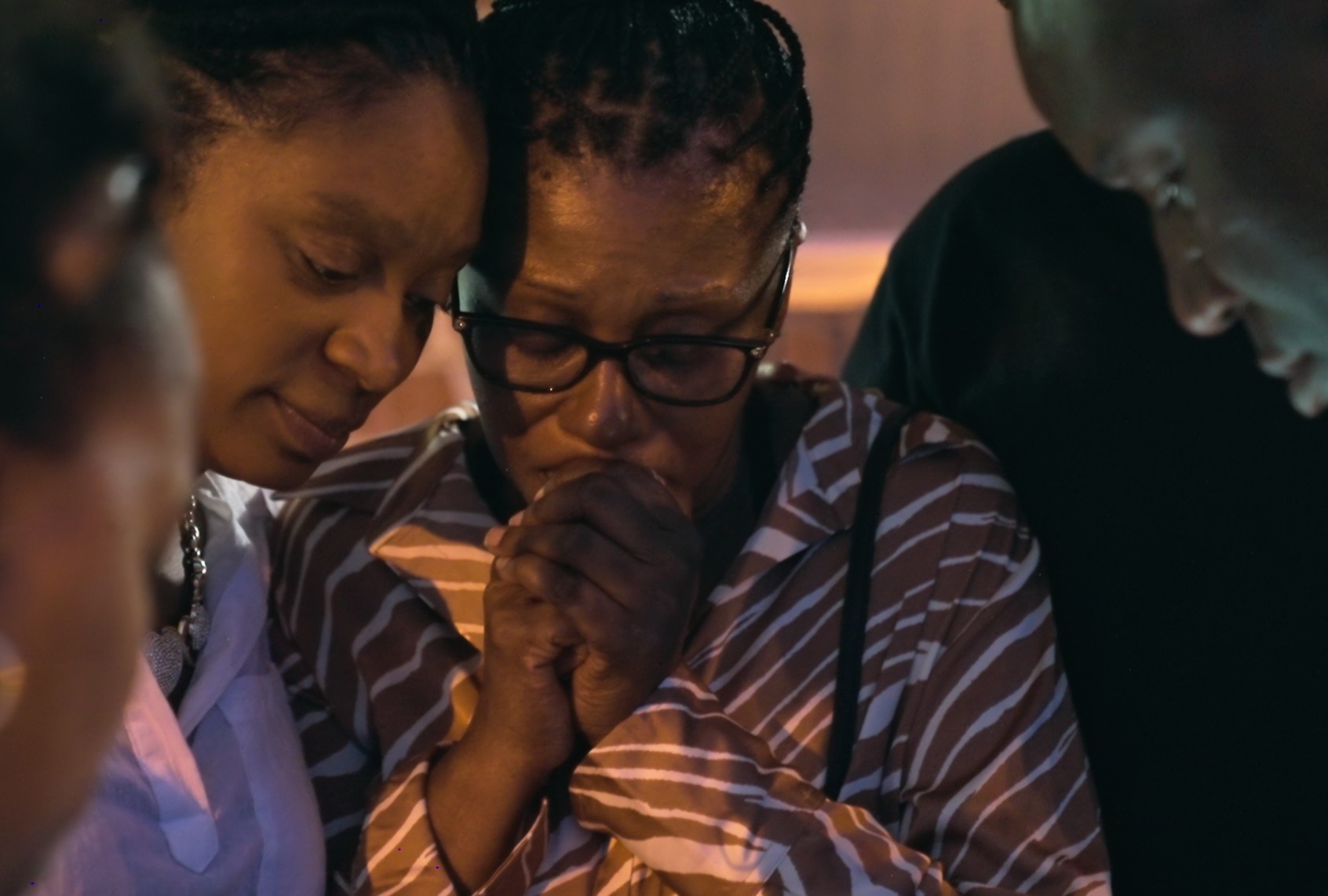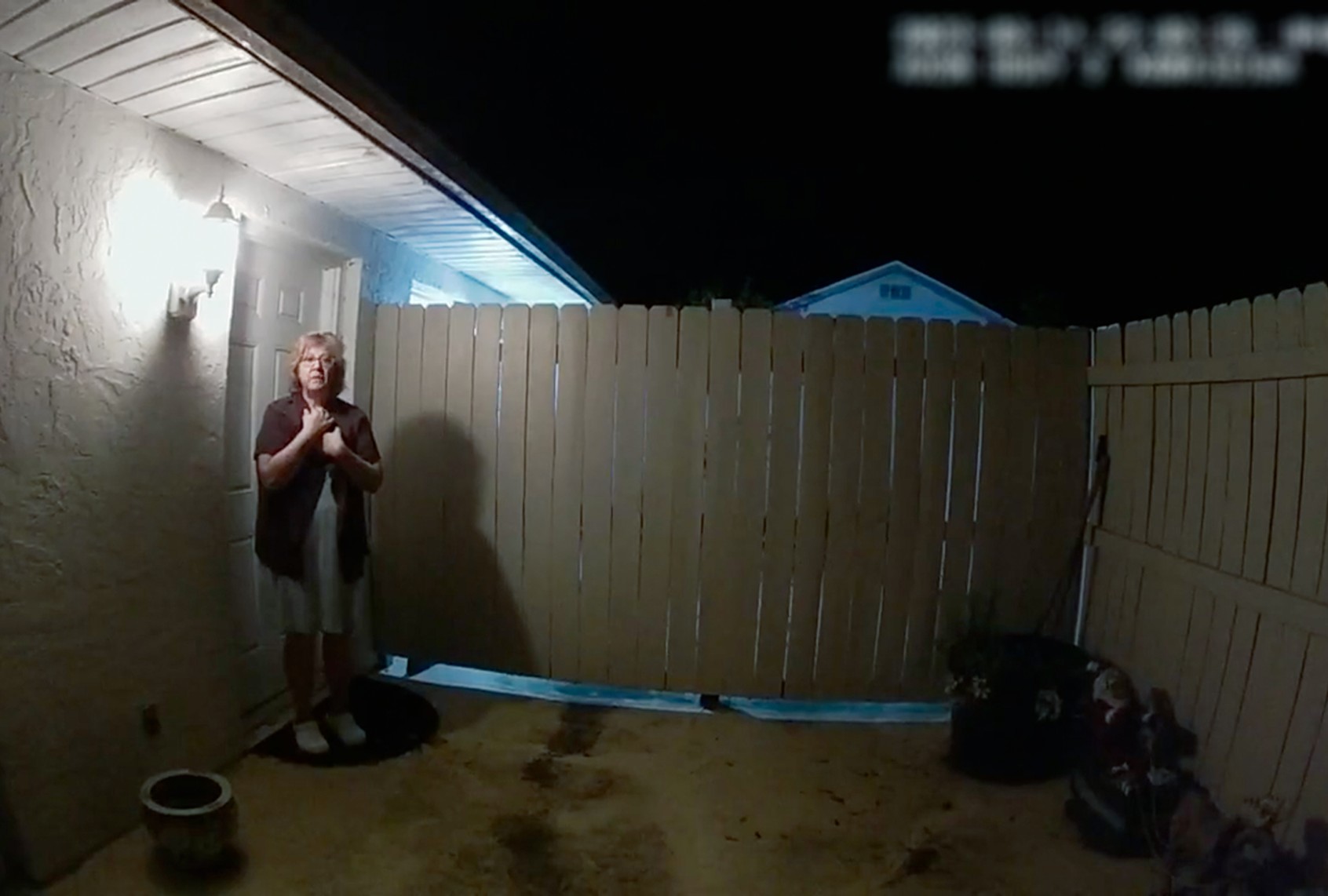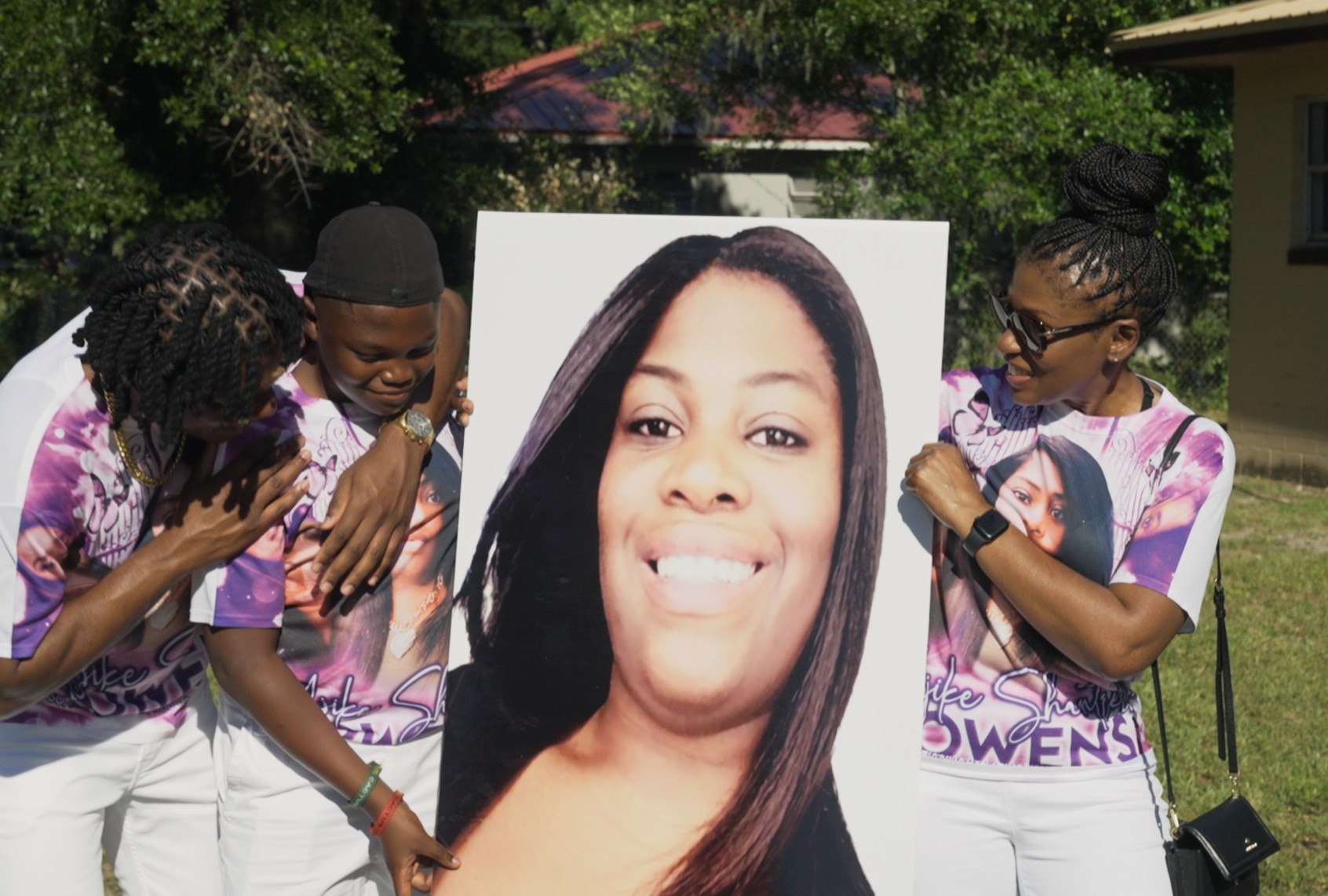Early in the Netflix true crime documentary, “The Perfect Neighbor,” an ongoing dispute between Susan Lorincz and her neighbors in an Ocala, Florida residential block is succinctly summarized by an unlikely participant: eight-year-old Afrika Owens. Afrika’s mother, 35-year-old Ajike “AJ” Owens, allowed Afrika and her older brothers, Israel and Isaac, to frequently join other neighborhood kids playing games in the empty field near their home, adjacent to Lorincz’s rental unit. Despite a lack of documented proof, Lorincz called the police several times to report that the children were being loud and destructive, “trespassing” on her property — a key word that Lorincz would continue to leverage in the coming weeks. During their routine response to one of Lorincz’s complaints, police asked Afrika what prompted the call. “The kids are just playing around here, and she comes out here talking smack,” Afrika says about Lorincz. Another friend in the group, an older child whose face is blurred in the film, adds a worthwhile kicker: “We’re not even… we’re 11!”
This distinction between the group of children in the Ocala neighborhood and their 58-year-old neighbor, Lorincz, is an important one in Geeta Gandbhir’s documentary (executive produced by Soledad O’Brien), which was a hit at this year’s Sundance Film Festival before Netflix acquired the film for distribution. “The Perfect Neighbor” is composed almost entirely of police bodycam footage, pieced together to create a haunting account of the escalating incidents. Across several months of archival footage, the children remain confused and upset that they’re being targeted for doing nothing other than being kids, playing outside and keeping to themselves. And while they may not be able to make perfect sense of it, they also shouldn’t have to. Gandbhir’s film emphasizes the massive injustice of children being made to experience not just constant harassment by an adult, but wanton prejudice and, eventually, the ramifications of manslaughter. After a quarrel between Lorincz and the kids on June 2, 2023, Ajike approached Lorincz’s home to speak to her neighbor and was shot through the door, dying from her injuries soon after.

(Netflix) Loved ones mourn Ajike ‘AJ’ Shantrell Owens, as seen in “The Perfect Neighbor”
Just because something looks and feels like a highbrow, more considerate true crime offering doesn’t mean that it can’t be undone by the genre’s same trappings.
Once police arrive on the scene, bodycam footage captures the immediate fallout from the violent crime, displaying a neighborhood in deep distress. And as effective as these recordings are in sending a pit plummeting to the viewer’s stomach, they also give “The Perfect Neighbor” a bitter, distasteful flavor. Gandbhir doesn’t shy away from showing the extent of the trauma as it’s happening, giving us a firsthand look at a tragedy unfolding in real time. But her touch is so heavy that it becomes leaden, almost crushing. In the chaos of Ajike’s death, viewers are forced to watch children who have already endured months of strife at the hands of an adult process the fact that they’ve lost their mother. We don’t just feel their guilt, fear and regret come pouring forth all at once; we see it. And as appropriately affecting as that sight is, especially when Gandbhir is emphasizing the inequity of American “stand your ground” laws, one has to wonder how far is too far when it comes to depicting a victim’s trauma for the sake of an audience’s entertainment.
While “The Perfect Neighbor” is certainly one of the finer examples of true crime documentaries in the last decade, its potency is hampered by the sheer extent of the trauma in the film. Gandbhir’s decision to tell this story through bodycam footage and security video, as opposed to on-camera interviews with the Owens family or any friends and neighbors from their Ocala community, is a smart one. Through this perspective, audiences remain engaged with the film’s events, told largely in chronological order, without any unnecessary frills or dramatization. The style allows “The Perfect Neighbor” to stand out from the pack of true crime documentaries and series proliferating streaming platforms, many of which are constructed with far less grace than Gandbhir’s film.
But just because something looks and feels like a highbrow, more considerate true crime offering doesn’t mean that it can’t be undone by the genre’s same trappings. With true crime’s popularity dramatically increasing over the last 15 years, audiences have become increasingly desensitized. Shots of graphic violence, crime scenes and dead bodies are nothing new; in fact, they’re so commonplace that they’ve reached the point of parody. And while these aspects can be included to give viewers a full scope of a crime, they can easily become exploitative, especially given that Netflix — arguably the premier purveyor of streaming true crime — doesn’t exactly have the most sensitive touch when it comes to its library of originals. Take the 2019 docuseries “Don’t F**k with Cats,” which includes gratuitous shots of animal violence and shots of a real snuff film. Or, consider Ryan Murphy’s “Monster” series, in which the true crimes of Jeffrey Dahmer, Ed Gein and the Menendez brothers are retold in sordid, bewilderingly sexy detail.

(Netflix) Susan Lorincz, as seen in “The Perfect Neighbor”
Though the streamer’s history of glamorizing and heightening heinous acts isn’t necessarily indicative of the quality of “The Perfect Neighbor,” it does cloud the documentary’s release with apprehension. As a Netflix true crime film, “The Perfect Neighbor” is getting the same kind of clickbait headline treatment that a more salacious, less impactful documentary on the streamer would. “AJ Owens’ Mother Had the Most Heartbreaking Reaction to ‘The Perfect Neighbor,’” one outlet’s search headline reads. Others answer such simple questions as where the crime took place, what happened to Lorincz, and what all the hype about the documentary is in the first place. One particularly revelatory headline, speaking to the lack of sensitivity surrounding this tragedy, reads: “Where Are Ajike Owens’ Kids Now? Inside Their Lives After Their Mom Was Shot and Killed by Their Neighbor.” This kind of response merely sensationalizes a harrowing experience that no child should have to endure, and, as important and compelling as Gandbhir’s film is, it does little to discourage a reaction that treats the victims, who are still just kids, like clickbait fodder.
When a film so agonizing is immediately followed by empty, uninformative clickbait articles asking “where are they now” questions about still-grieving children, one has to wonder where the line is. When does the pursuit of an affecting emotional core become utterly reckless?
In the immediate wake of the shooting, pandemonium overtakes the little street in Ocala. Before police lights cover the entire neighborhood in red and blue, we see personal security footage of the entryway to a neighbor’s home, where Ajike’s oldest son, 12-year-old Isaac, is visibly in distress and hyperventilating, begging for someone to call 911. This sight alone is gut-wrenching, like something not meant for human eyes, compounded by the fact that we’re watching a child trying to help his mother in a moment where every second counts. In bodycam footage, shortly after, viewers watch as police examine Ajike’s body, lying motionless on the ground. Among the disarray are soundbites from neighbors and Ajike’s other children. When police ask nine-year-old Israel if he’s hurt, Israel responds: “No. Well, my heart is broken.”
One could make the case that Gandbhir isn’t showing us much more than we’d see on the nightly news, and certainly not anything more than we could already find online or in any other true crime documentary. There’s also something to be said about the power these images have in emphasizing the film’s larger point of discourse around “stand your ground” laws, which allow Americans to defend themselves through violent force if they feel their lives are threatened. The laws have long been subject to criticism, with data showing that these laws are overwhelmingly used in cases of violence perpetrated by white individuals against Black people. And while Gandbhir’s film paints a very clear portrait of what happened, and how Lorincz attempted to abuse these laws in her favor, it’s difficult to ignore — let alone justify — the extent to which “The Perfect Neighbor” depicts the Owens’ suffering.
Start your day with essential news from Salon.
Sign up for our free morning newsletter, Crash Course.
The gut punch comes after Ajike’s body is taken from the scene by paramedics, and the father of her kids gathers them nearby to deliver what may be the worst news they’ll ever get in their lives. Upon hearing the words, “Mom’s not coming back anymore,” Isaac, Israel and Afrika are hysterical, groaning and crying while falling to the ground. While Gandbhir isn’t reveling in their pain, she refuses to cut away, creating a devastating and altogether mystifying section of the film that overwhelms her larger message. Scenes like this are tricky enough to pull off tastefully in dramatized films, but here, the sequence feels impossibly grievous. It’s angering, and rightfully so, but watching three young children grapple with the realization that their mother is gone backs “The Perfect Neighbor” right up to the line of rubbernecking sensationalism. Considering that these events happened less than two years ago, there’s also the queasy knowledge that Ajike’s children are still so young, young enough to not yet understand the potential consequences of having their most crushing life moments caught on camera and used in a documentary for the world’s most popular streaming service. When a film so agonizing is immediately followed by empty, uninformative clickbait articles asking “where are they now” questions about the grieving Owens children, one has to wonder where the line is. When does the pursuit of an affecting emotional core become utterly reckless?
That question has no simple answer, and perhaps the true crime genre is too extensive and unregulated to find a moral ground that audiences, filmmakers and victims can all agree on. But as “The Perfect Neighbor” crusades toward its inevitable end, the film’s empathy depletes. Gandbhir is so caught up in ensuring the documentary is a persuasive, even invigorating look at the dangers of “stand your ground” laws that she loses sight of her subjects in their most raw, broken forms. Their pain is leveraged to influence the viewer, and to great success. But for a film about exploiting systems for their power at a great cost, it’s baffling that “The Perfect Neighbor” lodges its most violent, woeful images to a similarly careless extent.
Read more
about what’s new in true crime


